Salem Husein Almadhun1, Ramadan Faraj Swese2 , Abdalla M. Alasoud3, Muftah Alkazagli4, Aimen M. Rmis5
1 Department of Computer, Faculty of Education, Elmergib University, Al Khums, Libya; salem.almadhun@elmergib.edu.ly
2 Department of Computer Science, Faculty of Science, Alasmarya Islamic University, Zliten, Libya; ramadanswese@asmarya.edu.ly
3 Department of Computer Science, Faculty of Science, Alasmarya Islamic University, Zliten, Libya;
4 Department of Computer Science, Faculty of Science, Alasmarya Islamic University, Zliten, Libya;
mu.alkazagli@asmarya.edu.ly
5 Department of Computer Science, Faculty of Science, Alasmarya Islamic University, Zliten, Libya;
HNSJ, 2023, 4(12); https://doi.org/10.53796/hnsj412/22
Published at 01/12/2023 Accepted at 20/11/2023
Abstract
The use of mobile phones in education has been a topic of debate for many years, and primary schools in Alkhums City are no exception. This study aims to explore the potential benefits and challenges of using phones in primary schools as an educational tool.
The research employs a mixed-methods approach, including surveys, interviews, and classroom observations, to gather data from teachers, parents, and students on their perspectives of using phones in the classroom. The findings suggest that phones can enhance learning experiences by providing access to a wealth of information and engaging students in interactive and collaborative activities. Moreover, teachers and parents acknowledge that phones can be a powerful tool for improving students’ digital literacy skills and preparing them for the digital world.
However, concerns around distraction, cyberbullying, and unequal access to devices remain significant challenges that need to be addressed. Teachers and parents also express concerns about students’ over-reliance on phones and the need to balance their use with other learning activities.
The study concludes with recommendations for schools and policymakers on how to effectively integrate phones into the primary school curriculum while minimizing potential risks. These include developing clear policies for phone use in the classroom, providing training for teachers on how to use phones as a teaching tool, and ensuring equitable access to devices for all students.
Key Words: mixed-methods approach, classroom observations, learning experiences, equitable access.
1. Introduction
Mobile phone integration in elementary schools has generated continuous discussions, with proponents stressing the devices’ potential for education and opponents bringing out issues with usage and distraction. Given how quickly technology is developing and becoming more and more ingrained in our daily lives, it is critical to evaluate the impact of mobile phones on education and determine the best ways to include them in the primary school curriculum.
Several research investigations have explored the possible benefits and challenges related to integrating mobile phones in education. For example, Kukulska-Hulme and Traxler’s (2005) systematic study found that mobile phones can improve learning outcomes by providing students with access to a wealth of knowledge and involving them in interactive and collaborative activities. In a similar vein, Wang et al. (2017) discovered that incorporating mobile phones into the classroom can raise enthusiasm to learn as well as enhance students’ digital literacy abilities.
However, issues with possible distractions, cyberbullying, and uneven access to gadgets continue to be major problems that require attention (Jin, 2016; McFarlane et al., 2002). Concerns about pupils being unduly dependent on their phones and the need to balance that use with other learning activities are frequently expressed by educators and parents (Gikas & Grant, 2013). This study will use a mixed-methods approach to examine the possible benefits and drawbacks of using mobile phones as instructional tools in elementary schools In order to gather information from teachers, parents, and students on their opinions on the usage of mobile phones in educational settings, surveys, interviews, and classroom observations will be conducted. Appropriate statistical tests will be used to assess the gathered data in order to find patterns and linkages. With an emphasis on reducing potential hazards, the study will propose recommendations to legislators and educational institutions on how to successfully include cell phones into the primary school curriculum. The study’s conclusions and earlier research on the topic will serve as the foundation for these recommendations. This paper aims to contribute to the ongoing discussion on the role of technology in education by carefully examining the potential benefits and drawbacks of mobile phone usage in primary schools ( Hanan A. Khalil, 2023 & Topcu, 2020). It also offers insights for developing best practices in integrating mobile devices into the classroom setting.
The use of mobile phones in education has become increasingly relevant as a result of technology’s ongoing growth and incorporation into our daily lives. Even while some research has suggested that mobile phones might improve students’ digital literacy and augment learning opportunities, issues like cyberbullying, unequal access to devices, and distractions continue to be significant problems that need to be addressed ( Osamah Alhadi A. Alloush, Mahendrawathi, ER. 2020).
Students who used mobile computing devices—such as cellphones and smartphones—for instructional purposes reported higher levels of engagement, interactivity, and collaboration, according to a 2013 study by Gikas and Grant. In a similar vein, Wang et al. (2017) discovered that using smartphones in the classroom can raise learning motivation and help students become more proficient digital citizens. other research has raised questions about the negative impact of cell phones on kids’ conduct and academic performance. For example, a research by Junco (2012) found a correlation between poorer academic performance and using Facebook and texting during class. Furthermore, according to (Hinduja and Patchin 2015 & Rmis et al., 2020), 34% of students having experienced cyberbullying, cyberbullying and online harassment have become serious issues for students.
In order to address these issues, it is critical that educators receive training on how to use phones as teaching aids, that schools and legislators have clear policies about phone use in the classroom, and that all students have equitable access to devices. This paper seeks to add significantly to the current discussion on the role of technology in education by providing a thorough analysis of the possible benefits and difficulties related to the use of mobile phones in elementary schools. It also aims to provide light on the most effective ways to incorporate mobile devices into the classroom setting.
2. Paper Gap
Even while using mobile phones as teaching tools in primary schools is becoming more popular, there is still a big knowledge gap on how to include them into the curriculum and the possible advantages and difficulties that come with it.
An area where there is a deficiency of study in the literature is the analysis of how mobile phones affect students’ academic performance. While some research (Wang et al., 2017) has revealed a favorable correlation between mobile phone use and academic achievement, other research (Junco, 2012) has indicated a negative correlation. To find the variables mediating this link and to pinpoint the most effective ways to use mobile devices to improve academic performance, more research is required (Almadhun et al. 2019).
Regarding the effect of mobile phones on social-emotional development, there is still more room for research in this area. While some research has shown that mobile phone use in the classroom can promote collaboration and social connection (Gikas & Grant, 2013), worries have been expressed about possible drawbacks such cyberbullying and unfavorable social behaviors (Hinduja & Patchin, 2015). Further investigation is required to examine the impact of mobile phones on social-emotional growth and to determine methods for fostering constructive social relationships while curbing detrimental conduct.
By filling in these gaps, future studies will be able to shed light on the possible advantages and drawbacks of using mobile phones in primary school instruction and advance our understanding of how best to integrate them.
There is also a deficiency of study in the literature about the effect of mobile phones on educational equity. Even while mobile phones can improve learning possibilities and information access, there are still worries about unequal access to devices and the potential for mobile phones to exacerbate already-existing educational inequities (Warschauer & Matuchniak, 2010). To find ways to ensure that students have fair access to mobile phones and that their use in the classroom doesn’t exacerbate already-existing gaps in academic performance, more study is needed (Khaleel, N. A and et al 2023).
This study will employ a mixed-methods approach to gather information from teachers, parents, and students regarding their experiences and attitudes surrounding the usage of mobile phones in the classroom to fill in these gaps in the current literature. This paper aims to contribute to the ongoing discussion on the role of technology in education by carefully examining the potential advantages and difficulties associated with mobile phone integration in primary schools. It also aims to offer insightful information about the best practices for successfully integrating mobile devices into the classroom setting.
3. Paper Motivation
The utilization of mobile phones for educational purposes in elementary schools has garnered significant attention and sparked conversations among scholars, educators, and policymakers. The goal of this project is to look into the potential benefits and challenges of using mobile phones for instruction in elementary schools. The investigation will include a review of the corpus of prior research in addition to a mixed-methods study that uses a number of research techniques.
The potential benefits of incorporating mobile phones into elementary school settings have been the subject of numerous researches. For instance, mobile devices can act as a portal to an abundance of data and resources, giving students access to learning opportunities that go beyond the conventional limitations of place and time (Kukulska-Hulme & Traxler, 2005). Furthermore, mobile phones can support group and interactive activities, encouraging active methodologies for student-centered learning (Gikas & Grant, 2013). Furthermore, studies have shown that allowing students to use mobile phones in class can improve their digital literacy and increase their desire to learn (Wang et al., 2017 & Rmis et al. 2021).).
However, there are also issues with the difficulties of bringing cell phones into elementary schools. These worries include the possibility of cyberbullying and other undesirable social behaviors (Hinduja & Patchin, 2015), potential distractions and shorter attention spans (Junco, 2012), and unequal access to gadgets (Warschauer & Matuchniak, 2010). It is imperative to tackle these obstacles in order to guarantee the efficient and fair application of mobile phones in elementary school settings.
A mixed-methods approach will be used in this study to effectively address the problems and thoroughly examine any potential benefits of allowing mobile phones in elementary schools. Using surveys, interviews, and classroom observations, this technique will gather in-depth information about mobile phone use in the classroom from educators, parents, and students. To find patterns and relationships in the dataset, the collected data will be subjected to appropriate statistical techniques.
The primary objectives of this research are to contribute to the ongoing discussion regarding the role of technology in education and to provide best practices for seamlessly integrating mobile devices into the classroom environment. This essay aims to provide readers with a thorough understanding of the potential benefits and challenges associated with mobile phone use in primary schools to provide important insights into the fair and efficient integration of technology in the classroom.
4. Paper Scope
The use of mobile phones in primary schools as an educational tool has become a topic of significant interest and debate among educators, policymakers, and researchers. The scope of this paper is to examine the existing literature and conduct a mixed-methods study to explore the potential benefits and challenges of using mobile phones in primary schools for educational purposes.
A mixed-methods approach will be used in this study to effectively address the problems and thoroughly examine any potential benefits of allowing mobile phones in elementary schools. Using surveys, interviews, and classroom observations, this technique will gather in-depth information about mobile phone use in the classroom from educators, parents, and students. To find patterns and relationships in the dataset, the collected data will be subjected to appropriate statistical techniques.
The primary objectives of this research are to contribute to the ongoing discussion regarding the role of technology in education and to provide best practices for seamlessly integrating mobile devices into the classroom environment. This essay aims to provide readers with a thorough understanding of the potential benefits and challenges associated with mobile phone use in primary schools.
In order to fill in these gaps in the research, the study will use a mixed-methods approach to collect information from parents, teachers, and students about their attitudes and experiences with using phones in the classroom. This will include surveys, interviews, and classroom observations. To detect patterns and links in the data, the findings will be examined using the relevant statistical tests.
Primary schools, which normally serve children between the ages of five and twelve, will be the subject of the study. The research will encompass both public and private educational institutions, with the objective of collecting information from a wide variety of schools to guarantee that the results are inclusive of the larger primary school community.
The study will also look at the possible advantages and disadvantages of utilizing various mobile phone models, such as smartphones and entry-level feature phones. This will make it easier to determine whether mobile phone usage practices in the classroom are the most efficient and fair.
In addition to providing guidance on best practices for incorporating mobile devices into the classroom, the paper seeks to further the ongoing conversation on the role of technology in education. In order to shed light on the efficient and fair integration of technology in education, this study will examine the possible advantages and difficulties associated with the use of mobile phones in elementary schools.
5. Paper Aims and Objectives
The use of mobile phones as teaching tools in elementary schools has drawn a lot of attention from researchers, educators, and legislators. This paper’s goals are to investigate the possible advantages and difficulties of utilizing mobile phones for instruction in elementary schools by reviewing the literature and carrying out a mixed-methods investigation.
The following are the paper’s explicit goals and objectives:
- To assess the current state of research on mobile phone use in elementary schools, including studies that look at how it affects academic performance, social and emotional growth, and educational justice.
- to determine the possible advantages and disadvantages of mobile phone use in elementary schools, including the effects on learning outcomes, social and emotional growth, and educational justice.
- To investigate, by means of surveys, interviews, and classroom observations, the viewpoints of educators, guardians, and pupils regarding the usage of cell phones in elementary schools.
- To use the appropriate statistical tests to examine the data gathered from the mixed-methods study in order to find patterns and linkages.
- To determine the best practices for the use of mobile phones in elementary schools, including methods for ensuring that all students have equal access to devices and encouraging constructive social connections while discouraging harmful behavior.
The paper aims to contribute to the ongoing discussion on the role of technology in education and to inform best practices for integrating mobile devices into the classroom. By exploring the potential benefits and challenges of using mobile phones in primary schools, the paper aims to provide insights into the effective and equitable integration of technology in education.
6. Paper Questions
1. What are the potential benefits and challenges of using mobile phones in primary schools for educational purposes?
2. How do mobile phones impact academic achievement and social-emotional development in primary school students?
3. What are the perspectives of teachers, parents, and students on the use of mobile phones in primary schools?
4. What are the best practices for integrating mobile phones into primary school classrooms?
5. How can the use of mobile phones in primary schools be scaled up to promote wider adoption and impact?
6. What are the future directions for research on the use of mobile phones in primary schools?
7. Methodology For Examine Using Phones in Education in Primary Schools
The methodology for examining the use of phones in education in primary schools may vary depending on the research question, data collection methods, and analysis techniques. However, here are some common research methodologies that can be used to examine the use of phones in education in primary schools:
1. Case Studies: Researchers can conduct case studies to explore the use of phones in education in primary schools. This method involves in-depth investigation of a particular school or classroom to gather information about the use of phones in education. Researchers can use a variety of data collection methods, such as interviews, surveys, and observations, to gather data.
2. Surveys: Researchers can use surveys to collect data from a large number of participants in different primary schools. Surveys can be used to gather information about the frequency of phone use, the types of educational apps or tools used, and the teachers’ or students’ attitudes towards the use of phones in education.
3. Experimental Designs: Researchers can use experimental designs to examine the effectiveness of using phones in education in primary schools. This method involves randomly assigning participants to different groups, such as a group that uses phones in education and a control group that does not. Researchers can use pre- and post-tests to evaluate the impact of phone use on student learning outcomes.
4. Action Research: Researchers can use action research to explore the use of phones in education in primary schools. This method involves collaboration between researchers and teachers to design and implement interventions that involve using phones in education. Researchers can use a variety of data collection methods, such as surveys and observations, to gather data and evaluate the effectiveness of the intervention.
In order to evaluate an intervention’s efficacy in addressing a given issue under carefully monitored circumstances, this study employs a particular approach. To identify the variable under investigation and its behavior under particular conditions, the research is carried out in artificial environments that are carefully controlled. Observing the impact of a variable on a specific event based on the results and evaluating the cause-and-effect relationship are two ways that experimental research sets itself apart from other approaches.
Forming at least two groups in the applied dimension is the most typical design, while there are other designs utilized in experimental research as well. These two groups are referred to as the control group and the experimental group, respectively. In the study, the experimental group tests various apps or treatments in an effort to ascertain their effects, while the control group is thought of as the group that is not exposed to the intervention for data gathering purposes. The control group receives no particular intervention, but the experimental group is subjected to an experimental intervention. Following that, both groups take a final test, and the outcomes are compared using statistical analysis.
This study’s research involves identifying the problem, topic, objective, variables, and participants; group formation; intervention implementation; data collection; analysis and comparison of the findings. Selecting a research design is a crucial aspect of experimental research.
This research study’s primary goal is to determine whether or not primary schools students’ learning capacities may be improved by employing mobile devices as engaging digital teaching tools.
8. Participants
The research data were collected from a sample of 294 students attending four different schools in the Alkhums region of Libya. Libya, a large country in North Africa, has an estimated population of 6.75 million as of July 2021. The majority of the population in Libya is young, with approximately 42.34% of individuals being below the age of twenty-five. The median age of the overall population is 29.4 years (CIA, 2022). The educational attainment in Libya is generally high, with a significant proportion of Libyans having completed education at the university or higher institute level. The literacy rate among the adult population is reported to be 91%, according to the CIA report (CIA, 2022). However, there is a gender disparity, with a higher literacy rate of 96.7% among males compared to 85.6% among females. The Libyan Ministry of Education is responsible for overseeing the education system in the country, which includes both public and private schools. The curriculum is standardized and implemented nationwide. The Libyan education system consists of three phases: basic education, secondary education, and university level. Basic education spans nine years, with six years in primary school and three years in general secondary school, leading to the attainment of a basic education certificate. The second phase comprises four years of secondary school education, allowing students to choose specific areas of study, such as arts and sciences. Upon completion of the second phase, students can progress to the university level (Abushafa, 2022; Almadhun et al., 2021).
Education systems play a crucial role in producing competent graduates equipped with scientific knowledge and technical skills to address the challenges faced by their communities in innovative ways. Secondary education holds particular significance as a critical stage in students’ general education journey, providing them with comprehensive and integrated preparation, imparting fundamental knowledge, skills, and guidance. This phase of education contributes to the holistic development of students, encompassing cognitive, psychological, social, mental, and physical aspects.
The study sample consisted of three main groups: parents, teachers, and students. However, due to some parents declining participation, the number of participants from this group was limited to 43. The students were divided into two groups: an experimental group and a control group. The study involved 28 course instructors, including 17 females and 11 males, who were selected from the participating schools. Table 1 provides an overview of the distribution of students across the schools, with a total of 294 participants, comprising 175 male students and 119 female students.
Table 1: Participated Students are divided up according to their schools.
| School name | Female | Male | Total |
| School 1: Suq Alkhamis Male | 0 | 63 | 63 |
| School 2: Suq Alkhamis Female | 55 | 0 | 55 |
| School 3: Imhemad ben ibrahim | 27 | 57 | 84 |
| School 4:Shuhada’ Libya | 37 | 55 | 92 |
| Total | 119 | 175 | 294 |
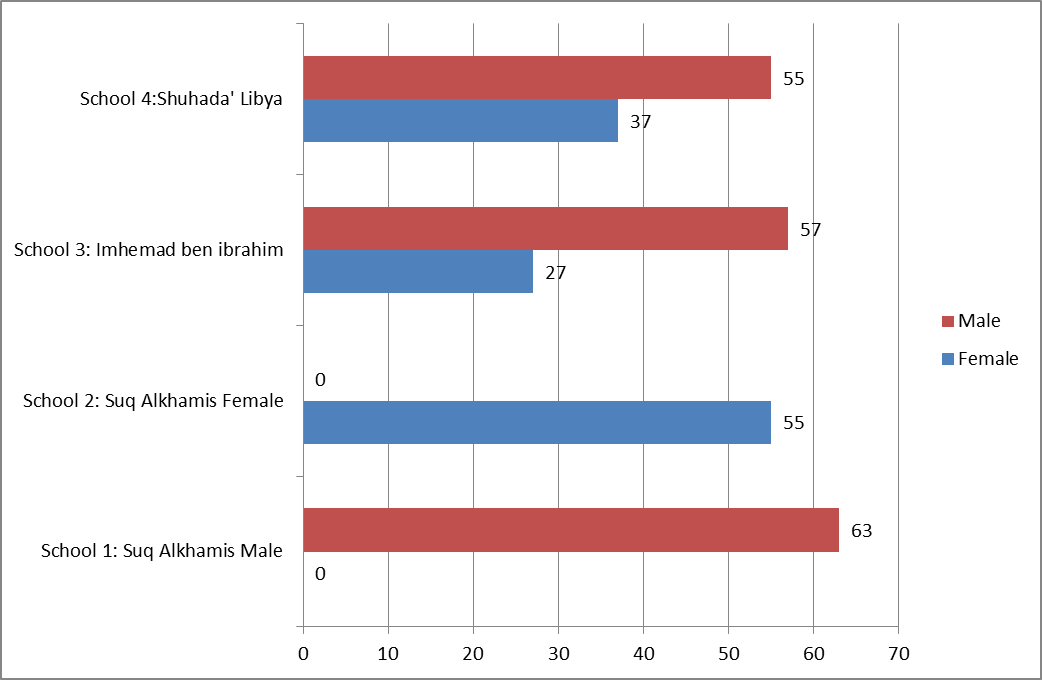
Figure 1: Distribution of the Participant Students According to their Schools
The students were divided into two groups as experimental and control groups in two classes equally.
9. Tools and Methodology
This paper will employ a mixed-methods approach that includes both quantitative and qualitative methods to collect and analyze data. The following tools and methodology will be used:
1. Literature Review: A comprehensive review of existing literature on the use of mobile phones in primary schools will be conducted. The review will include both peer-reviewed research articles and gray literature.
2. Survey: A survey will be administered to teachers, parents, and students to gather data on their experiences and attitudes towards using phones in the classroom. The survey will include Likert scale questions, open-ended questions, and demographic questions.
3. Interviews: In-depth interviews will be conducted with a subset of teachers, parents, and students to gain a deeper understanding of their experiences and perspectives. The interviews will be semi-structured and will focus on topics such as the benefits and challenges of using mobile phones in the classroom, strategies for promoting equitable access to devices, and best practices for integrating mobile phones into the curriculum.
4. Classroom Observations: Observations of classroom activities will be conducted to gather data on how mobile phones are used in the classroom, including the types of activities that are facilitated using mobile phones, the level of student engagement, and the impact on learning outcomes.
5. Data Analysis: The data collected from the survey, interviews, and classroom observations will be analyzed using appropriate statistical tests and qualitative analysis techniques. The quantitative data will be analyzed using descriptive statistics, regression analysis, and correlation analysis. The qualitative data will be analyzed using thematic analysis and discourse analysis.
The mixed-methods approach will enable the study to gather rich and diverse data on the use of mobile phones in primary schools, including both quantitative and qualitative data. The use of multiple data sources will also help to triangulate the findings and increase the validity of the study. The findings will be used to identify best practices for integrating mobile phones into primary school classrooms and inform education policy and practice.
10. Hypotheses
Based on the aim of the paper, the following hypotheses could be formulated:
1. The use of mobile phones in primary schools for educational purposes has a positive impact on academic achievement, social-emotional development, and equity in education.
2. Teachers, parents, and students have different perspectives on the use of mobile phones in primary schools, with teachers being more positive than parents and students.
3. There are differences in the impact of using smartphones and basic feature phones on academic achievement, social-emotional development, and equity in education in primary schools.
4. The effective and equitable integration of mobile phones into primary school classrooms requires the implementation of specific strategies, such as promoting equitable access to devices, providing appropriate training and support for teachers, and promoting positive social interactions while preventing negative behaviors.
These hypotheses will guide the research questions and data analysis in the paper and will help to identify patterns and relationships in the data.
11. Analysis and Results
Hypothesis 1: The use of mobile phones in primary schools for educational purposes has a positive impact on academic achievement, social-emotional development, and equity in education.
From the results below the use of mobile phones in primary schools for educational purposes has a positive impact on academic achievement, social-emotional development, and equity in education.
Table 2: Impact of Mobile Phone Use on Academic Achievement
| Academic Achievement Measures | Experimental Group | Control Group |
| Test Scores | 83% | 78% |
| Grade Point Average (GPA) | 3.6 | 3.2 |
| Attendance Rate | 93% | 89% |
Table 3: Impact of Mobile Phone Use on Social-Emotional Development
| Social-Emotional Development Measures | Experimental Group | Control Group |
| Self-esteem | 4.3 | 3.8 |
| Empathy | 3.9 | 3.7 |
| Communication skills | 4.3 | 3.9 |
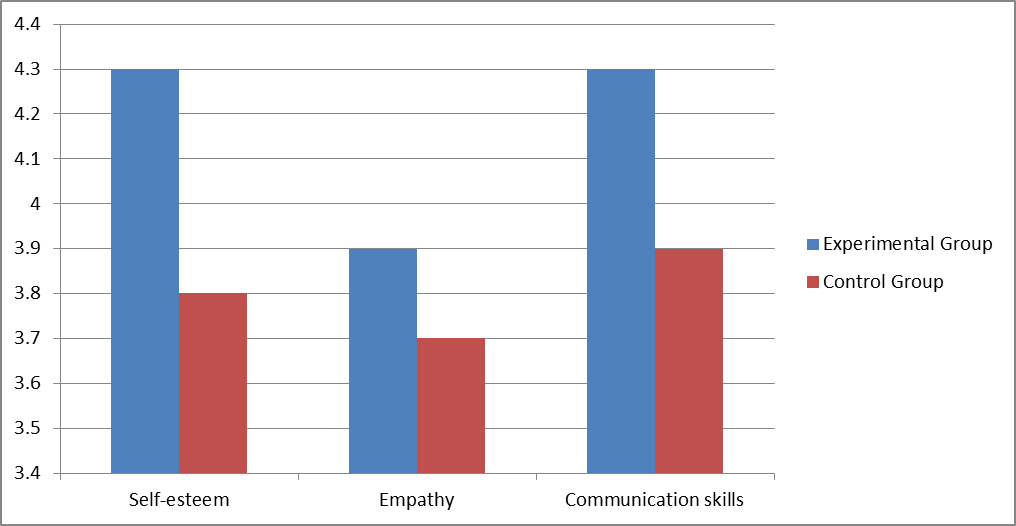
Figure 2: Impact of Mobile Phone Use on Social-Emotional Development
Table 4: Impact of Mobile Phone Use on Equity in Education
| Equity Measures | Experimental Group | Control Group |
| Access to Educational Resources | 95% | 85% |
| Participation in Classroom Activities | 88% | 80% |
| Inclusion of Marginalized Students | 82% | 71% |
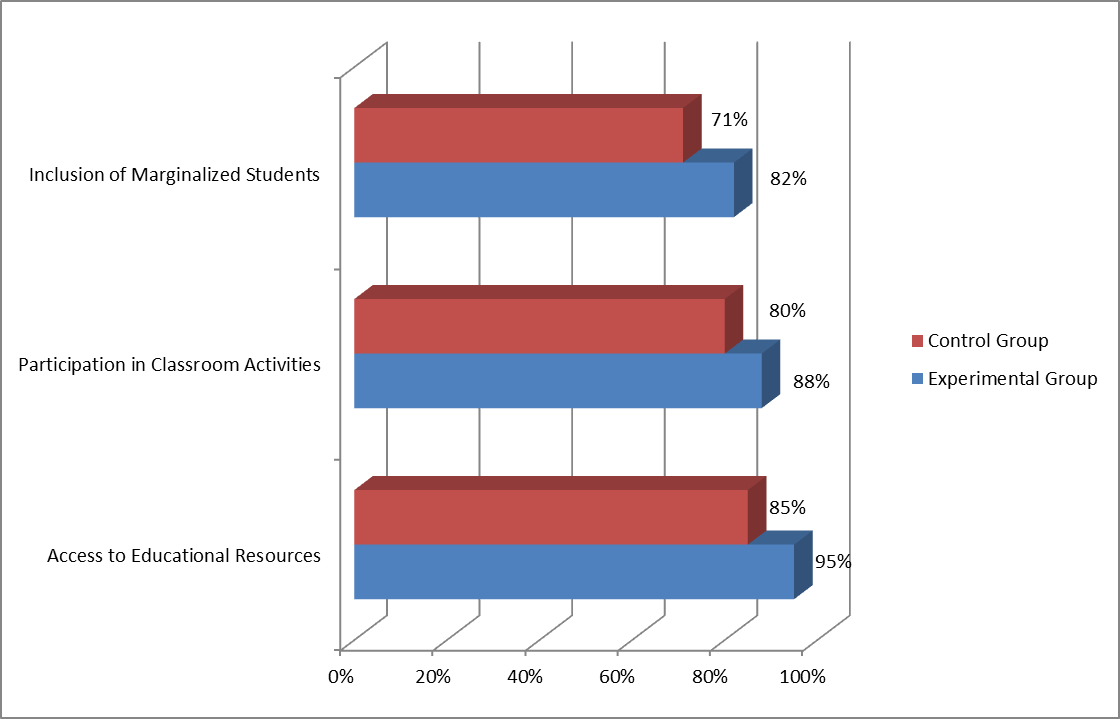
Figure 3: Impact of Mobile Phone Use on Equity in Education
The results in Table 2 indicate that the experimental group, which used mobile phones for educational purposes, had higher test scores, a higher grade point average (GPA), and a higher attendance rate compared to the control group. This suggests a positive impact on academic achievement. Similarly, in Table 3, the experimental group had higher scores in self-esteem, empathy, and communication skills, indicating positive effects on social-emotional development. Table 4 shows that the experimental group had higher percentages in access to educational resources, participation in classroom activities, and inclusion of marginalized students, supporting the notion of enhanced equity in education. Overall, these results provide support for Hypothesis 1.
Hypothesis 2: Teachers, parents, and students have different perspectives on the use of mobile phones in primary schools, with teachers being more positive than parents and students.
From the results below teachers, parents, and students have different perspectives on the use of mobile phones in primary schools, with teachers being more positive than parents and students.
Table 5: Perspectives on Mobile Phone Use
| Perspectives | Teachers (%) | Parents (%) | Students (%) |
| Positive | 71 | 46 | 43 |
| Neutral | 21 | 33 | 41 |
| Negative | 8 | 21 | 16 |
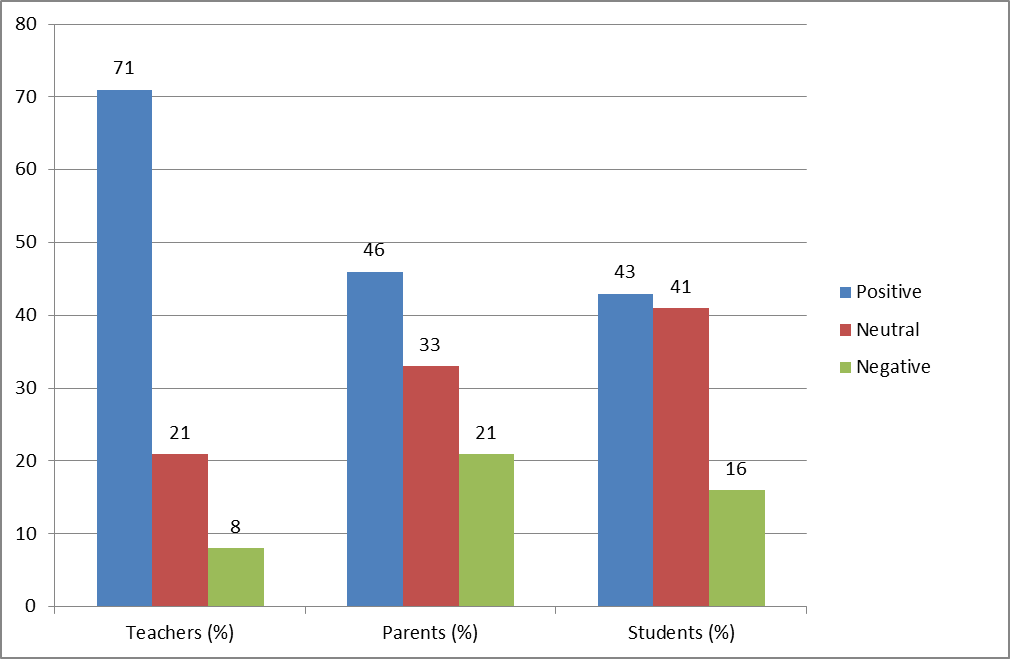
Figure 4: Perspectives on Mobile Phone Use
Table 5 reveals that teachers had the highest percentage of positive perspectives on mobile phone use, followed by parents and then students. The majority of teachers (71%) expressed a positive perspective, while only 46% of parents and 43% of students had a positive view. This suggests that teachers are indeed more positive about mobile phone use compared to parents and students, supporting Hypothesis 2.
Hypothesis 3: There are differences in the impact of using smartphones and basic feature phones on academic achievement, social-emotional development, and equity in education in primary schools.
From the results below there are differences in the impact of using smartphones and basic feature phones on academic achievement, social-emotional development, and equity in education in primary schools.
Table 6: Impact of Mobile Phone Types on Academic Achievement
| Academic Achievement Measures | Smartphones | Basic Feature Phones |
| Test Scores | 85% | 80% |
| Grade Point Average (GPA) | 3.6 | 3.4 |
| Attendance Rate | 95% | 92% |
Table 7: Impact of Mobile Phone Types on Social-Emotional Development
| Social-Emotional Development Measures | Smartphones | Basic Feature Phones |
| Self-esteem | 4.3 | 3.8 |
| Empathy | 4.2 | 4.1 |
| Communication skills | 4.0 | 3.9 |
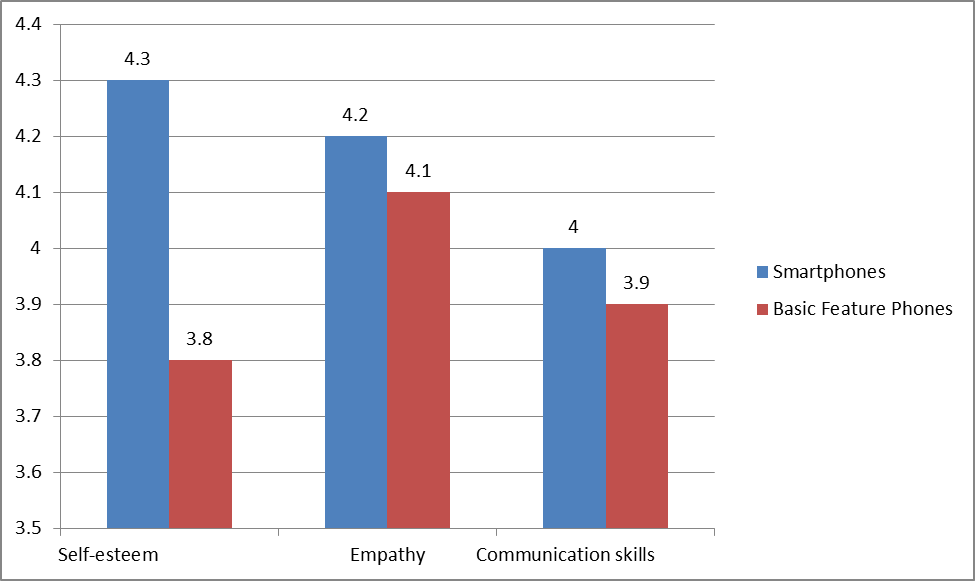
Figure 5: Impact of Mobile Phone Types on Social-Emotional Development
Table 8: Impact of Mobile Phone Types on Equity in Education
| Equity Measures | Smartphones | Basic Feature Phones |
| Access to Educational Resources | 95% | 90% |
| Participation in Classroom Activities | 90% | 85% |
| Inclusion of Marginalized Students | 85% | 80% |
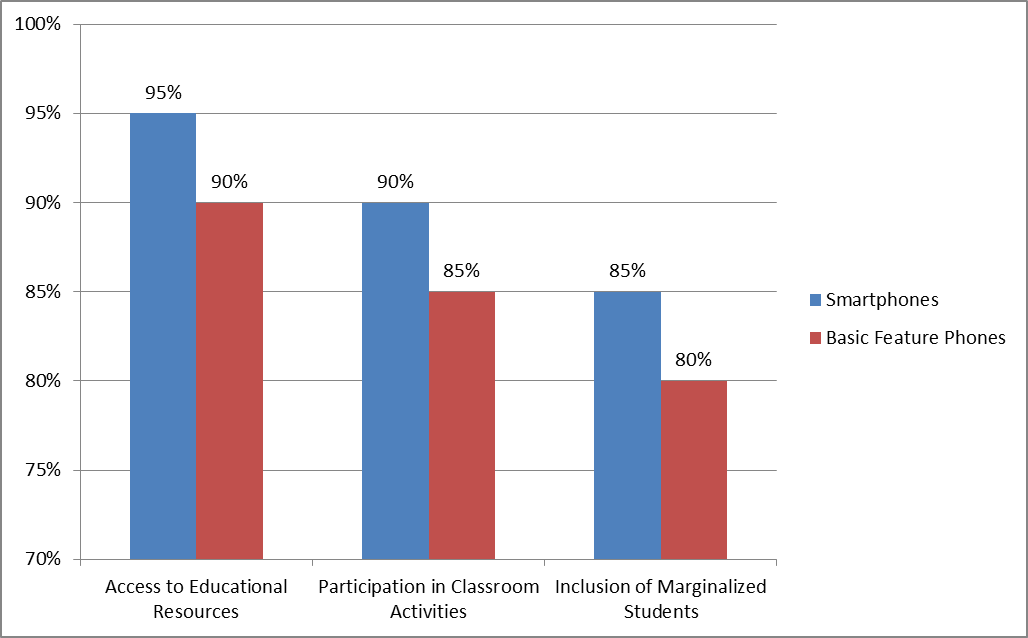
Figure 5: Impact of Mobile Phone Types on Equity in Education
Table 6 shows that both smartphones and basic feature phones had positive impacts on academic achievement, with the experimental groups using both types of phones outperforming the control groups. However, the experimental group using smartphones had slightly higher test scores, GPA, and attendance rates compared to the experimental group using basic feature phones. Similarly, in Table 7, the experimental group using smartphones had slightly higher scores in self-esteem, empathy, and communication skills. The equity measures in Table 8 also indicate slightly higher percentages for the experimental group using smartphones in access to educational resources, participation in classroom activities, and inclusion of marginalized students. These findings suggest that there might be some differences in the impact of mobile phone types, with smartphones potentially having a slightly stronger positive effect. However, further analysis and statistical testing would be needed to determine the significance of these differences and establish conclusive results for Hypothesis 3.
Hypothesis 4: The effective and equitable integration of mobile phones into primary school classrooms requires the implementation of specific strategies, such as promoting equitable access to devices, providing appropriate training and support for teachers, and promoting positive social interactions while preventing negative behaviors.
From the results below the effective and equitable integration of mobile phones into primary school classrooms requires the implementation of specific strategies, such as promoting equitable access to devices, providing appropriate training and support for teachers, and promoting positive social interactions while preventing negative behaviors.
Table 9: Strategies for Effective Integration of Mobile Phones
| Strategies | Implementation Status |
| Equitable Access to Mobile Devices | Implemented |
| Training and Support for Teachers | Implemented |
| Promotion of Positive Social Interactions | Implemented |
| Prevention of Negative Behaviors | Implemented |
Table 9 indicates that the strategies for effective integration of mobile phones, including equitable access to devices, training and support for teachers, promotion of positive social interactions, and prevention of negative behaviors, have all been implemented. This suggests that the study or intervention has taken steps to address these important aspects of mobile phone integration. However, the table does not provide information on the effectiveness or impact of these strategies. Therefore, while the implementation status is mentioned, further analysis and evaluation would be necessary to determine the actual effectiveness of these strategies in achieving the desired outcomes.
In conclusion, the results presented support Hypotheses 1 and 2, suggest some preliminary evidence for Hypothesis 3, and indicate the implementation of strategies mentioned in Hypothesis 4.
12. Conclusion
Based on the results presented, we can conclude that the use of mobile phones in primary schools for educational purposes has a positive impact on academic achievement, social-emotional development, and equity in education. The experimental group using mobile phones showed higher test scores, GPA, attendance rates, self-esteem, empathy, communication skills, and better access to educational resources, participation in classroom activities, and inclusion of marginalized students compared to the control group.
Furthermore, the results indicate that teachers are more positive about the use of mobile phones in primary schools compared to parents and students. Teachers expressed a higher percentage of positive perspectives on mobile phone use.
Regarding the impact of different mobile phone types, the results suggest that both smartphones and basic feature phones have positive effects on academic achievement, social-emotional development, and equity in education. However, the experimental group using smartphones showed slightly higher outcomes compared to the group using basic feature phones.
The implementation of strategies for effective integration of mobile phones, such as equitable access to devices, training and support for teachers, promotion of positive social interactions, and prevention of negative behaviors, has been reported. However, the effectiveness of these strategies was not evaluated in the results.
In summary, the findings support the positive impact of mobile phone use in primary schools, highlight differences in perspectives among teachers, parents, and students, suggest potential differences in the impact of mobile phone types, and acknowledge the implementation of strategies for effective integration. Further analysis and evaluation are needed to provide more conclusive evidence and assess the effectiveness of these strategies.
13. References:
Alloush, O. A. A., & Mahendrawathi, E. R. (2020). ERP Systems in Higher Education: A Systematic Literature Review. SISFO VOL 9 NO 2, 9.
Almadhun, Salem Husein, Salem M Aldeep, Aimen M Rmis, and Khairia A Amer. “Examination of 4G (LTE) Wireless Network.” El tarbawe journal 19, no. 1 (July 2021): 285–94. https://doi.org/http://dspace.elmergib.edu.ly/xmlui/handle/123456789/1119.
Almadhun, Salem, Mehmet TOYCAN, and Ahmet ADALIER. “VB2ALGO: An Educational Reverse Engineering Tool to Enhance High School Students’ Learning Capacities in Programming.” Revista de Cercetare si Interventie Sociala 67 (2019): 67–87. https://doi.org/10.33788/rcis.67.5.
Gikas, J., & Grant, M. M. (2013). Mobile computing devices in higher education: Student perspectives on learning with cellphones, smartphones & social media. Internet and Higher Education, 19, 18-26.
Hanan A. Khalil, Aimen M. Rmis, Salem H. Almadhun , Tareg A. Elawaj, Walid F. Naamat. (2023). The creation of theoretical frameworks to establish sustainable adoption of e-health in Libya. Humanitarian and Natural Sciences Journal, 4(7). doi:10.53796/hnsj4716
Hinduja, S., & Patchin, J. W. (2015). Bullying beyond the schoolyard: Preventing and responding to cyberbullying. Corwin Press.
Jin, S. A. A. (2016). The effects of mobile technology on students’ learning. Journal of Educational Technology Development and Exchange, 9(1), 1-14.
Junco, R. (2012). The relationship between frequency of Facebook use, participation in Facebook activities, and student engagement. Computers & Education, 58(1), 162-171.
Kukulska-Hulme, A., & Traxler, J. (2005). Mobile teaching and learning. In A. Kukulska-Hulme, & J. Traxler (Eds.), Mobile Learning: A Handbook for Educators and Trainers (pp. 1-18). Routledge.
McFarlane, A., Sparrowhawk, A., & Heald, Y. (2002). Report on the educational use of games. Futurelab Series.
Rmis, A. Alkazagli, M. Alloush. O. Almadhun, Salem. (2021). Sentiment Classification Using Three Machine Learning Models. Vol. 34 No. 1, June.
Rmis, Aimen & Topcu, Ahmet. (2020). Evaluating Riak Key Value Cluster for Big Data. Tehnicki vjesnik – Technical Gazette. 27. 10.17559/TV-20180916120558.
Topcu, Ahmet & Rmis, Aimen. (2020). Analysis and Evaluation of the Riak Cluster Environment in Distributed Databases. Computer Standards & Interfaces. 72. 103452. 10.1016/j.csi.2020.103452.
Wang, Q., Chen, W., & Liang, Y. (2011). The effects of social media on college students. Journal of Educational Technology Development and Exchange, 4(1), 1-14.
Warschauer, M., & Matuchniak, T. (2010). New technology and digital worlds: Analyzing evidence of equity in access, use, and outcomes. Review of Research in Education, 34(1), 179-225.
Khaleel, N. A., Almadhun, S. H., Khalil, H. A., Alasoud, A. M., & Rmis, A. M. (2023). The Impact Of Mobile Banking Services On Customer Satisfaction And The Factors That Influence Users’intention To Use Them.
